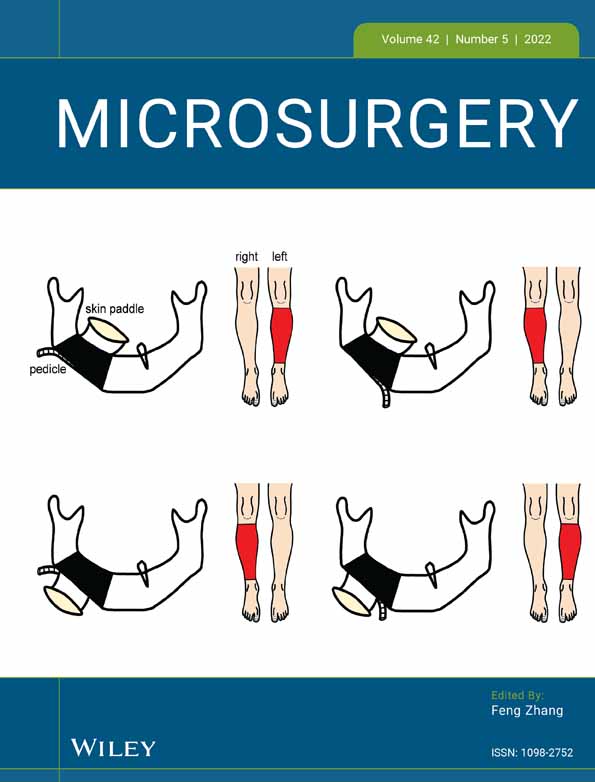Virtual planning of the anterolateral thigh free flap for heel reconstruction
Funding information: This study did not receive any specific grant from funding agencies in the public, commercial, or not-for-profit sectors.
[Correction added on April 06, 2022, after first online publication: Degree of Suhail Masadeh has been corrected.]
Abstract
Purpose
three dimensional (3-D) virtual planning is an example of computer assisted surgery that improved management of composite tissue defects. However, converting the 3-D construct into two dimensional format is challenging. The purpose of this study was to assess 3-D virtual planning of complex heel defects for better optimized reconstruction.
Patients and methods
a prospective analysis of 10 patients [9 male and 1 female; mean age = 27.9 years] with post-traumatic heel defects was performed. Heel defects comprised types II (three patients) or III (seven patients) according to Hidalgo and Shaw and were managed using anterolateral thigh (ALT) free flap adopting 3-D virtual planning of the actual defect which was converted into a silicone two dimensional mold. The mean definitive size of the defects was 63.4 cm3. Functional, aesthetic, and sensory evaluations of both donor and recipient sites were performed 1 year after surgery.
Results
Six patients received thinned ALT (mean size = 139 cm3) while four patients received musculofasciocutaneous ALT flap (mean size = 199 cm3). One flap exhibited partial skin flap necrosis. Another flap was salvaged after re-exploration secondary to venous congestion. The mean follow-up was 20.2 months. The Maryland foot score showed 4 excellent, 5 good, and 1 fair cases. The mean American Orthopedic Foot and Ankle hind foot scoring was 76.3 (range: 69–86). All patients regained their walking capability.
Conclusions
3-D virtual planning of complex heel defects facilitates covering non-elliptical defects while harvesting a conventional elliptical flap with providing satisfactory functional outcomes and near-normal contour, volume, and sensibility.
CONFLICT OF INTEREST
All authors declare that they have no conflicts of interest.
Open Research
DATA AVAILABILITY STATEMENT
The data that support the findings of this study are available from the corresponding author upon reasonable request.




